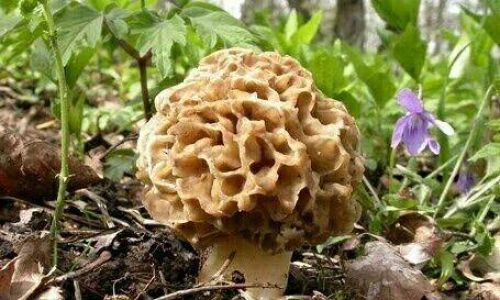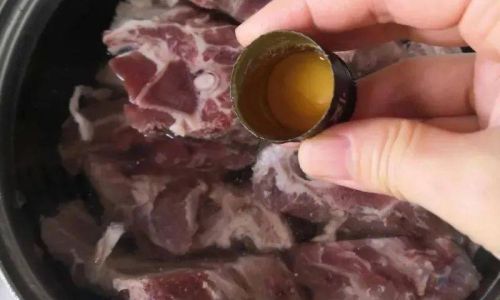Introduction
In the realm of culinary delights, fresh wild mushrooms stand out for their unique flavors, textures, and nutritional benefits. Whether you’ve ventured into the woods to gather them yourself or purchased them from a trusted vendor, preserving their freshness is crucial to maximizing their culinary potential. One of the most effective ways to extend the shelf life of fresh wild mushrooms is through proper refrigeration. This guide will delve into the intricacies of how to refrigerate fresh wild mushrooms, ensuring they retain their quality, flavor, and nutritional value.
Understanding Fresh Wild Mushrooms
Before diving into the refrigeration process, it’s essential to understand the basic characteristics of fresh wild mushrooms. Unlike cultivated mushrooms, which are often grown in controlled environments, wild mushrooms can vary greatly in species, appearance, and texture. Some common types include morels, porcini, chanterelles, and shiitakes. Each species has its own distinct flavor profile and texture, making them highly sought-after by chefs and food enthusiasts.

Fresh wild mushrooms are perishable and require careful handling to prevent spoilage. They are prone to moisture loss, mold growth, and discoloration if not stored correctly. Therefore, understanding the proper storage techniques is vital to maintaining their quality.
Preparation for Refrigeration
-
Cleaning: The first step in preparing wild mushrooms for refrigeration is cleaning them gently. Use a soft brush or a damp cloth to remove any dirt, debris, or insects. Avoid soaking mushrooms in water as this can cause them to absorb excess moisture, leading to faster spoilage. If mushrooms are particularly dirty, you can rinse them quickly under cold running water and then pat them dry with a clean towel.
-
Trimming: After cleaning, trim off any stems that are tough or woody. This not only improves the overall texture of the mushroom but also helps in reducing moisture loss during storage.

-
Sorting: Separate mushrooms by species and size. This ensures that similar items are stored together, making it easier to manage and use them as needed.
Refrigeration Techniques
-
Paper Towel Method: One of the most effective ways to refrigerate fresh wild mushrooms is by using the paper towel method. Place a clean, dry paper towel on the bottom of a storage container or on a plate. Arrange the mushrooms in a single layer, stem side down, on top of the paper towel. Cover the mushrooms with another clean, dry paper towel to absorb any excess moisture. Seal the container or cover the plate with plastic wrap, ensuring there is some airflow to prevent condensation.
-
Perforated Container: Another option is to use a perforated container designed for produce storage. These containers allow for proper ventilation while keeping the mushrooms contained. Again, line the bottom with a paper towel, arrange the mushrooms in a single layer, and cover with another paper towel if necessary.

-
Unsealed Bags: Some people prefer to store mushrooms in unsealed paper or plastic bags. While this method allows for better airflow, it’s crucial to monitor the mushrooms closely for signs of moisture accumulation or mold growth.
Temperature and Humidity Control
The ideal refrigerator temperature for storing fresh wild mushrooms is between 32°F and 40°F (0°C and 4°C). This temperature range slows down the growth of bacteria and mold, extending the shelf life of the mushrooms. Additionally, it’s important to keep the humidity in the refrigerator at a moderate level. Too much humidity can cause the mushrooms to become slimy, while too little can lead to excessive moisture loss.
Monitoring and Usage

Regularly check the mushrooms for signs of spoilage, such as discoloration, mold growth, or an unpleasant odor. If any mushrooms show signs of spoilage, discard them immediately to prevent the spread of bacteria to other produce.
When ready to use, remove the mushrooms from the refrigerator and allow them to come to room temperature for about 30 minutes. This helps to restore their natural juices and improve their texture for cooking.
Alternative Storage Methods
For those who plan to store mushrooms for longer periods or who wish to preserve their flavor and texture even further, consider alternative storage methods such as drying, freezing, or pickling. Drying mushrooms involves using a food dehydrator or oven to remove moisture, making them shelf-stable. Freezing involves blanching the mushrooms briefly in boiling water before transferring them to an airtight container in the freezer. Pickling involves preserving mushrooms in a vinegar-based solution, which adds a tangy flavor and extends their shelf life.

Conclusion
In conclusion, refrigerating fresh wild mushrooms properly is a crucial step in maintaining their quality, flavor, and nutritional value. By following the steps outlined in this guide, including careful preparation, selecting the right refrigeration technique, controlling temperature and humidity, and regularly monitoring the mushrooms, you can ensure that your wild mushrooms remain fresh and delicious for as long as possible. Whether you’re planning to use them in a gourmet dish or simply want to enjoy their unique flavors, proper refrigeration is key to unlocking the full potential of fresh wild mushrooms. Happy foraging and cooking!





0 comments